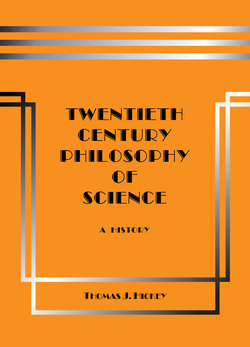Читать книгу Twentieth-Century Philosophy of Science: A History (Third Edition) - Thomas J. Hickey - Страница 35
На сайте Литреса книга снята с продажи.
A. SYNTAX 3.04 Syntactical Dimension
ОглавлениеSyntax is the system of linguistic symbols considered in abstraction from their associated meanings.
Syntax is the most obvious part of language. It is residual after abstraction from pragmatics, ontology, and semantics. And it consists only of the forms of expressions, so it is often said to be “formal”. Since meanings are excluded from the syntactical dimension, the expressions are also said to be semantically “uninterpreted”. And since the language of science is usually written, the syntax of interest consists of visible marks on paper or more recently linguistic displays on computer display screens the syntax of expressions is sometimes called “inscriptions”. Examples of syntax include the sentence structures of colloquial discourse, the formulas of pure or formal mathematics, and computer source codes such as FORTRAN or LISP.
